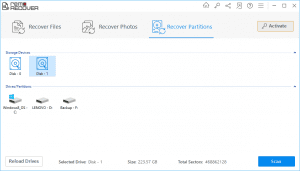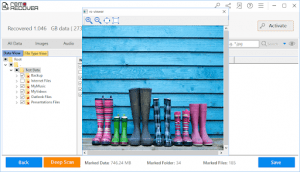Summary: Wondering how to recover data from Solid State Drive? Unlike hard drives, most of the SSD's users will not be able to recover data from SSD easily. This is the reason you need to read this article to understand what happens when you delete a file in SSD and how you can recover data from SSD with the help of professional data recovery software like Remo Recover.


SSD or Solid State Drive is the storage device that can save us a lot of time and resources when compared to the conventional hard disk drives. With its fast processing speed and quick bootup of your computer, SSD’s are here to stay and rule the future of storage devices in computers and laptops.
The question here is unlike HDD, when a SSD is dead, failed or formatted is it possible to recover data? This is because, SSD's perform differently when compared to hard disk drives. You need to understand about TRIM before going ahead to recover data from SSD.
What is TRIM in SSD?
TRIM is a command for storage devices like Solid State Drives. When you are deleting or copying a file on to the SSD, this TRIM function will in come into picture. For example, when you delete a file operating system will tell TRIM about the delete operation and then the TRIM will immediately wipe off the deleted file and makes the space empty. This is very crucial for the performance of the SSDs. So if you have deleted the file with TRIM enabled, the chances of recovering files from SSD is bleak.
Is it possible to recover data from Solid State Drive?
It is possible to recover data even from dead, corrupt or even failed SSDs. Yes, you read that right, recovering deleted files from SSD might be a hard task but the TRIM function in SSDs doesn't wipe out data when your SSD is corrupt or damaged or even failed. So, this increases your chances at recovering data from SSD. However, to achieve this you will need a professional SSD recovery software that can help you easily recover files from SSD in no time. We present you Remo Recover for SSD, a professional SSD recovery software that helps you recover data from SSD.
Built with an advances scan engine that can recover files like audio, video photos and many more from any SSD, Remo is one of the industry leading data recovery software.
All you need to do to recover data from your SSD is - Download Remo.


Recover Data from SSD With Remo SSD Recovery Software
To recover data from SSD, download and install Remo Drive Data Recovery Software and follow the below mentioned steps:
- Launch Remo Recover on your computer and connect the SSD from which you want to recover data from
- Click on Recover Partitions, select the SSD from which you want to recover data and click on Scan

- After completion of the scanning process, you will able to list of recoverable data in File Type View and Data Type View
- Preview the files recovered from SSD and verify the recoverable files

- Save the recovered data on to any storage device other than the recovered SSD.
How to Know If your SSD is Failing?
Although SSD’s are better than traditional hard disk drives which have moving parts that contribute to wear and tear. However, SSD’s fail in long term, SSD failure is dependent on the number of read/write cycles the SSD is capable of. However, most of the SSD’s do last for long time than hard disks.
SSD’s unlike HDD doesn’t show symptoms while they fail with cracking sound or stopped movement of their disk. The only course of action that can help you from losing data on SSD’s is to take regular backup of data.
Some of Common Reasons behind SSD failure and data loss
- Existence of bad blocks on SSDs that might slow down the performance of SSD and eventually lead to failure of SSD
- Error messages saying file system needs to be repaired leaves your data inaccessible
- SSD working in read only mode, is another symptom of failed solid state drive
- Computer won't boot, you see a flashing question mark or No boot device error
Above mentioned scenarios are some of the common scenarios that might lead to data loss on SSD’s. The only solution to keep your data safe is to take backup at regular intervals of time.
In case your SSD is dead or inaccessible, the only way to recover data from SSD is to make use of SSD recovery software like Remo Recover.
Tips to keep your SSD Safe and avoid data loss
- Increase the lifespan of your SSD drive by avoiding constant read/write access.
- When you see symptoms of SSD failure, update the firmware
- Keep your Device drivers updated
- Do not disable TRIM on your SSD
In case of data loss make use of Remo Recover to recover data from SSD. We hope this article helped you to recover deleted or lost from Solid State Drive. Do let us know your thoughts on the article or if you have any questions shoot them in the comment section below.



